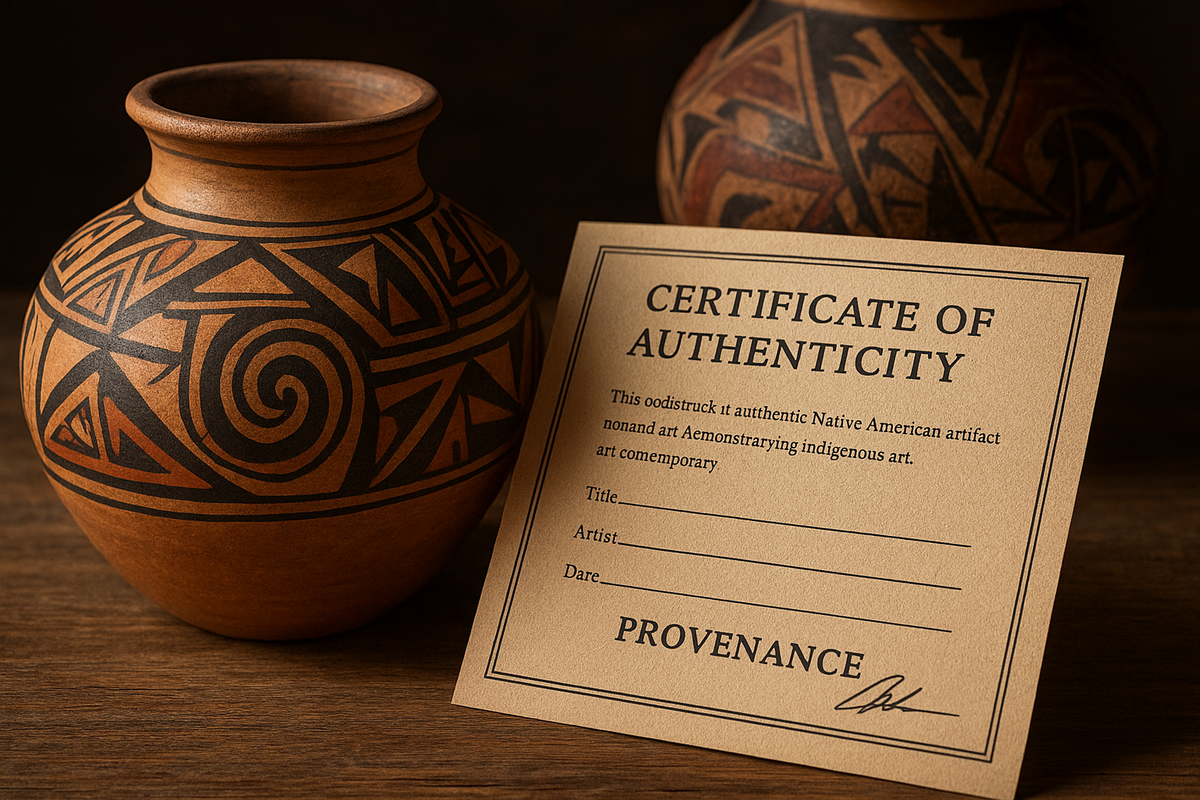Native American art holds a unique cultural and historical significance, making authenticity a crucial factor for collectors, enthusiasts, and investors. With the rise of reproductions and forgeries, it’s important to know how to verify genuine pieces. Authentic Native American art encompasses not only the visual or material aspects of the work but also its cultural context, creator’s heritage, and documented history. Understanding certificates of authenticity and provenance is central to ensuring that the art you acquire is both genuine and respectful of the traditions it represents.
Certificates of Authenticity and Their Importance
A certificate of authenticity (COA) is a document that verifies the origin and legitimacy of a piece of Native American art. Reputable artists, galleries, and tribal organizations issue these certificates, often including information such as the artist’s name, tribal affiliation, date of creation, materials used, and the artwork’s title. While a COA is not a guarantee of absolute authenticity, it serves as an essential reference for buyers, helping them distinguish genuine pieces from imitations. When evaluating a certificate, it’s important to check the issuing authority, cross-reference artist records, and confirm that the information aligns with known practices and styles of the tribe or artist.
Understanding Provenance and Ownership History
Provenance refers to the documented history of an artwork’s ownership and exhibition. Establishing provenance is a key step in verifying Native American art, as it provides a traceable chain from the artist to the current owner. Provenance may include sales receipts, gallery records, exhibition catalogs, or prior collections. A well-documented provenance not only confirms authenticity but also enhances the artwork’s value and credibility. Collectors should pay attention to gaps or inconsistencies in provenance records, as these may indicate potential issues with authenticity. Working with trusted galleries, auction houses, or tribal organizations can help ensure that provenance is accurately documented and verifiable.
Tips for Collectors and Enthusiasts
To confidently acquire authentic Native American art, collectors should combine knowledge of COAs, provenance, and cultural context. Researching the specific tribe, artist, and traditional techniques used in the work provides valuable insight into what makes a piece authentic. Visiting reputable galleries, participating in tribal art markets, and consulting experts can also increase the likelihood of acquiring genuine art. Additionally, it’s advisable to maintain records of purchases and certificates, as this documentation can be invaluable for future sales, insurance, or historical reference. By carefully verifying authenticity, collectors not only protect their investment but also honor the cultural integrity and legacy of Native American artists.
For collectors seeking deeper guidance on acquiring genuine Native American art, exploring a comprehensive resource like “Collecting Authentic Native American Art: Tips and Inspiration for Beginners” can be invaluable. This article covers practical advice on identifying authentic pieces, understanding certificates of authenticity, and evaluating provenance. It also offers inspiration for displaying your collection while respecting the cultural and historical significance of each item. Following these guidelines ensures that every acquisition is both a sound investment and a meaningful tribute to Native American artistry.
